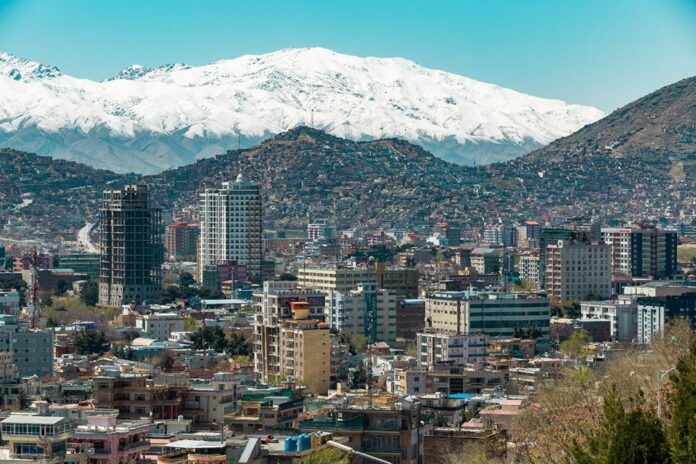Owing to international neglect and the shortcomings of its de facto leaders, Afghanistan faces formidable challenges in 2025. The author argues that urgent, introspective, and informed local and global interventions are necessary to save the nation.
In 2025, Afghanistan finds itself at the epicenter of a humanitarian, economic, and sociopolitical crisis. Yet, the plight of its people remains conspicuously absent from global discourse. As the world’s attention is diverted to conflicts in Gaza, Ukraine, and Sudan, Afghanistan’s worsening conditions paint a wretched picture of suffering exacerbated by climate disasters, economic collapse, fragile peace and stability coupled with dismayed neighbors, and the vanishing voices of Afghan girls and women. Once a focal point of international aid and intervention, Afghanistan now exists on the periphery of global attention, a daunting reminder of the fragility of international commitments to long-term stability.
An Escalating Humanitarian Catastrophe
The scale of the humanitarian crisis in Afghanistan is staggering. Over 23 million people—more than half the country’s population—require urgent humanitarian assistance. The United Nations has reported that Afghanistan is on the brink of a catastrophic famine, with millions facing severe food insecurity.
Children, in particular, bear the brunt of this crisis. Malnutrition rates among Afghan children have reached unprecedented levels, with one in two children under the age of five suffering from stunted growth due to chronic malnutrition. Entire generations risk being permanently affected by developmental delays and preventable diseases—a silent tragedy is unfolding without adequate global intervention.
Human Rights Decaying by Minute
Under the Taliban’s oppressive regime, Afghan women and girls face unprecedented levels of deprivation and abuse. The Taliban’s policies systematically deny women their basic human rights, including access to education, employment, and freedom of movement. Girls are barred from secondary and higher education, effectively erasing their presence from schools and universities.
Women who once played integral roles in Afghanistan’s healthcare, education, and government sectors have been forced out of their jobs, plunging families deeper into poverty and stripping the nation of critical expertise. The exclusion of women from public life is dismantling Afghanistan’s social fabric, undermining its already fragile economy, and perpetuating cycles of poverty and inequality.
The international community’s failure to respond adequately to these violations not only emboldens the Taliban’s gender apartheid but also sets a dangerous precedent for the treatment of women in conflict zones and authoritarian regimes globally.
Climatic Quandary
Afghanistan’s vulnerability to climate change compounds its existing challenges. Frequent natural disasters, including droughts, floods, and landslides, have devastated agricultural livelihoods, leaving millions without food or income. According to the United Nations Environment Programme, Afghanistan is among the countries most vulnerable to climate-induced disasters.
With over 80% of the population reliant on agriculture, the loss of arable land and water resources has catastrophic implications for food security and economic stability. Severe flooding in 2023 displaced tens of thousands of people, destroying homes, crops, and infrastructure. The cyclical nature of climate-induced crises emphasizes the need for a coordinated international response that prioritizes both immediate relief and long-term adaptation strategies. Without significant investment in climate resilience and sustainable development, Afghanistan’s ability to recover remains bleak.
Economic Collapse
The economic situation in Afghanistan has deteriorated to unprecedented levels. Following the Taliban’s takeover in August 2021, international sanctions and the freezing of Afghan assets crippled the nation’s economy. The cessation of foreign aid, which once accounted for nearly 75% of public spending, has left the government unable to provide essential services.
Inflation has skyrocketed, unemployment rates are at record highs, and millions of Afghans have been pushed into extreme poverty. Desperate measures for survival, including child labor, forced marriages, and the sale of organs, have become disturbingly common. The erosion of livelihoods not only deepens the humanitarian crisis but also fuels instability, creating fertile ground for extremism and conflict.
The reduction in humanitarian funding compounds the problem. In 2024, the United Nations’ appeal for $4.6 billion to address Afghanistan’s humanitarian crisis received less than half the required funding. This shortfall forced aid agencies to scale back life-saving programs, leaving millions without access to food, healthcare, and shelter.
Regional Repercussions
The Afghan crisis poses serious risks to regional stability, with its consequences extending well beyond Afghanistan’s borders. Neighboring countries like Pakistan and Iran, already burdened by economic challenges such as high inflation and unemployment, are struggling to cope with the influx of Afghan refugees. The arrival of these refugees overstretches their scarce resources, intensifies social tensions, and exacerbates political instability. In Pakistan alone, nearly 1.5 million registered Afghan refugees—and countless undocumented individuals—have contributed to growing resentment over the added strain. This has further complicated bilateral relations.
Simultaneously, Afghanistan’s instability and a polarised sociopolitical fabric have created an enabling landscape for extremist groups, such as the Islamic State of Khurasan Province (ISKP) and Tehrik-e-Taliban Pakistan (TTP).
While the Taliban consider the ISKP a serious threat to Afghanistan’s security and beyond, Pakistan has been disproportionately affected due to the deteriorating security situation since the Taliban regained power, facing a surge in violent attacks attributed to the emboldened TTP operating from Afghan territory. In 2023, nearly 1,000 lives—primarily those of security personnel—were lost to these attacks. The violence escalated further in 2024, which the Center for Research and Security Studies (CRSS) labeled the deadliest year in almost a decade. CRSS reported that attacks last year claimed 2,526 lives, including approximately 700 security personnel, over 900 civilians, and nearly 900 militants. This marked the highest death toll in nine years, surpassing the previous peak of 2,432 fatalities in 2016.
Despite repeated calls for collaboration, the Taliban’s inability—or unwillingness—to curb the activities of anti-Pakistan militant groups has deepened the trust deficit between the two nations, which begs the question: how can lasting peace be achieved and sustained in Afghanistan when turmoil consumes its closest neighbor?
What Must Be Done in 2025?
Addressing Afghanistan’s crisis requires a comprehensive and coordinated international approach:
- Reassessing Sanctions:
– Targeted sanctions on the regime’s leadership can mitigate harm to the population while holding the Taliban accountable.
– Facilitating humanitarian aid and economic activity is necessary to alleviate suffering. - Increasing Humanitarian Funding:
– Closing the funding gap can prioritize food security, healthcare, and shelter.
– Enhanced funding will save lives and lay the groundwork for recovery. - Empowering Women and Girls:
– Supporting education, vocational training, and economic opportunities for Afghan women is crucial.
– International organizations must collaborate with local civil society groups to create safe spaces for women. - Investing in Climate Resilience:
– Programs focusing on sustainable agriculture, water management, and disaster preparedness can help Afghan communities adapt to environmental challenges.
– Consider including the Afghan indigenous voices in global climate decision-making and platforms such as COP. - Constructive Engagement with the Taliban:
– Dialogue can facilitate access to vulnerable populations and pave the way for incremental change.
– Engagement does not equate to formal recognition but acknowledges the urgency of humanitarian concerns.
– Counter Terrorism serves as a potential entry point to establish regional and global trust with the Taliban provided that they take it seriously.
The Moral Imperative
Afghanistan’s crises are not merely its own; they are a shared responsibility of the international community. The current neglect not only deepens the suffering of millions but also risks long-term consequences for regional and global stability. History has shown that abandoning Afghanistan leads to insecurity, extremism, and human suffering. Presently, not just Afghanistan but countries like Pakistan also face the aftermath of the same abandonment, which reminds me of something that Tariq Ali said years ago about the war on terror, “The war in Afghanistan, the first war of the twenty-first century, shows the United States doing what it wants to do, not caring about who it antagonizes, not caring about the effects on neighbouring regions.”
Lastly, a humble thought for Afghanistan’s rulers: While it is easy to claim that the war is over, has the entire Afghan nation won the war, or just the Taliban? The international community must help Afghanistan, but foremost, it is the Afghan leaders who must decide whether they want an unjust, superficially peaceful Afghanistan or a prosperous one in the true sense. The choice is theirs. For 2025 to be a turning point, courage, compassion, and commitment are needed—not just from the world, but from Afghanistan itself.




